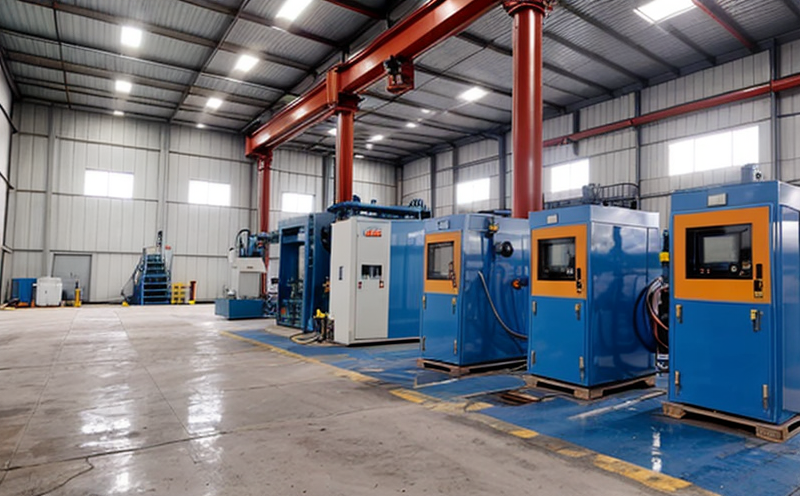ASTM D4326 XRF Analysis of Mineral Composition Testing
The ASTM D4326 standard provides a robust method for analyzing the elemental composition in mineral samples using X-ray fluorescence (XRF) spectroscopy. This service is essential for mining companies, geological surveys, and research organizations to ensure accurate determination of trace elements in industrial minerals such as limestone, sandstone, and dolomite.
Mineral composition analysis through ASTM D4326 helps identify critical components that influence the performance and quality of final products. For instance, in cement production, knowing the exact amounts of calcium, magnesium, and silicon is crucial for optimizing raw materials selection and ensuring compliance with industry standards like ISO 9001.
The process begins with sample preparation where raw minerals are ground into a fine powder to ensure uniformity and accessibility of elements within the sample. This step ensures accurate readings from the XRF instrument, which operates by bombarding the sample with high-energy x-rays, causing atoms in the sample to emit secondary x-rays (characteristic radiation). These emissions contain unique energy signatures corresponding to specific elements present.
Once prepared, samples are loaded into an XRF analyzer configured according to ASTM D4326 guidelines. The instrument measures the intensity of these characteristic x-rays and compares them against a calibration curve derived from certified reference materials (CRMs). This allows for precise quantification of elemental concentrations down to parts per million levels.
Compliance with ASTM D4326 ensures that results are reproducible, reliable, and consistent across different laboratories. By adhering strictly to this standard, mining companies can maintain accurate records necessary for regulatory compliance and internal quality control processes. Additionally, it supports research activities aimed at discovering new uses or improving existing applications of industrial minerals.
Real-world scenarios where ASTM D4326 XRF analysis proves invaluable include:
- Quality Assurance: Continuous monitoring helps maintain consistent product quality.
- Supply Chain Management: Ensures suppliers meet specified mineral content requirements.
- New Product Development: Identifies potential raw materials for innovative products.
Benefits
The implementation of ASTM D4326 XRF analysis offers numerous advantages to stakeholders involved in industrial minerals testing. Firstly, it provides accurate and reliable data which is critical for decision-making processes within mining operations.
Secondly, by adhering strictly to this standard, laboratories gain credibility among clients who rely on consistent results across multiple projects. This can lead to increased business opportunities as potential partners trust the accuracy of analyses conducted under such stringent protocols.
Thirdly, compliance with ASTM D4326 ensures that all tests are performed consistently according to internationally recognized best practices. This reduces variability between samples tested in various locations or by different personnel, leading to more accurate and reproducible results.
Lastly, the ability to detect trace elements at very low concentrations enables companies to optimize their processes further. For example, understanding minute amounts of impurities could guide adjustments needed for better product performance or reduced environmental impact during extraction operations.
International Acceptance and Recognition
The ASTM D4326 standard has gained widespread acceptance globally due to its stringent quality control measures and emphasis on precision. Many countries have adopted this method as part of their national standards or guidelines for mineral testing.
In North America, the United States Geological Survey (USGS) recommends using ASTM D4326 when conducting XRF analyses because it provides consistent results that are acceptable to regulatory bodies like the U.S. Environmental Protection Agency (EPA).
Similarly, European Union members often require adherence to international standards such as those set by CEN-CENELEC, which frequently references ASTM methodologies including D4326. The International Organization for Standardization (ISO) also recognizes ASTM D4326 as a reliable approach for mineral composition determination.
Adopting this standard ensures that findings are comparable internationally, facilitating collaboration between industries and governments worldwide. It also allows for easier transfer of personnel trained in ASTM techniques across borders without fear of discrepancies arising from differing local practices.
Competitive Advantage and Market Impact
Implementing ASTM D4326 XRF analysis offers significant competitive advantages in the mining industry. It allows companies to stay ahead of regulatory changes while maintaining high standards of quality control.
By ensuring that all tests meet or exceed international benchmarks, firms can build strong reputations for reliability and accuracy. This reputation translates into greater customer trust and loyalty, ultimately driving sales growth.
The ability to quickly adapt to new technologies and methodologies also positions organizations favorably against competitors who may lag behind in adopting modern testing practices. With continuous advancements in XRF technology enabled by standards like ASTM D4326, companies can leverage these improvements to enhance their operations further.





